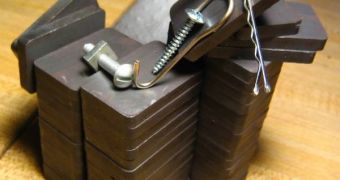Semiconductors have been the base for modern-day electronics since the first processors appeared, but, for a long time, experts have been trying to make them into structures that not only conduct electricity, but also have their own unique functions. Inspiration for this was drawn from magnets, which, for instance, perform the simple task of sticking to a refrigerator. Similarly, physicists want to be able to make semiconductors act like more than mere conveyors, they want to use them for data recording and electronic control.
Up to this point, they have managed to endow the structures with such properties, but only at freezing, extremely-cold temperatures, of up to -260 degrees Celsius (-400 degrees Fahrenheit). At this point, they are learning how to use photons, the small, elementary particles that make up light, to instill these types of behaviors in semiconductors at room temperatures. Experts at the University of Washington (UW) have recently succeeded in finding a way to use photons successfully on semiconductor crystals, called nanocrystals or quantum dots.
“This provides a completely new approach to microelectronics, if you can use spin instead of charge to process information and use photons to manipulate that process. It opens the door to materials that store information and perform logic functions at the same time without the need for super cooling,” Daniel Gamelin, the UW chemistry professor who has led the team that has made the breakthrough, explains. Details of their achievement appear in the Friday (August 21st) issue of the respected journal Science.
In their experiments, the experts modified the structure of a cadmium-selenium semiconductor called cadmium selenide, so that some of its nonmagnetic cadmium ions were replaced with magnetic manganese ions. The selenide was then placed in a colloidal solution, where particles were suspended in the liquid like cream was in milk. The crystals were smaller than ten nanometers in diameter. The team then fired a beam of photons at the solution, which aligned all of the manganese ions' spins.
This created a magnetic field about 500 times stronger than the selenide would have generated without the magnetic manganese ions. In spite of the fact that the effect was most strong at extremely low temperatures, it also retained a huge part of its force at room temperatures as well.

 14 DAY TRIAL //
14 DAY TRIAL //